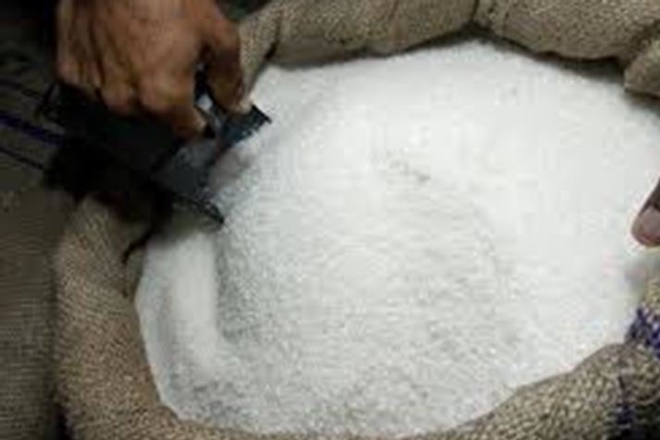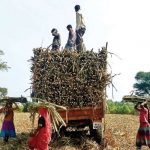The idea of making MSP (Minimum Support Price) work by forcing private players to buy the crop at this price is a bad one. There have been signals recently that the cotton MSP may become the price at which mills will have to buy the crop. Hence, instead of the government bearing the cost—as happens with public procurement of rice and wheat—the burden could be transferred to yarn/textile mills. The logic can then be extended to pulses where mills can be made to buy pulses at the MSP in case market prices come down due to surplus production. The same can also hold for oilseeds where the edible oil manufacturers will be forced to buy oilseeds at MSP. Therefore, we need to have some debate on the issue and reach a consensus.
Today, sugar is probably the most controversial crop, and for historical reasons. Farmers grow indiscriminate volumes of cane that is deleterious for the soil as it is a water-guzzler; this has resulted in the water table getting depleted in cane-growing regions. Mills have to then pay a predetermined price for the crop. In fact, farmers have to sell to mills in the prescribed region, given there are restrictions on the distance between two mills.
There was a time when there was a statutory minimum price (SMP) that has been since replaced by a Union-government-determined fair and remunerative price (FRP). States have their own State Advisory Prices (SAP); forcing mills to procure at SAP, which tends to be higher than the FRP as every government tries to score brownie points with the farmers, has become the norm. This is a legacy issue that should have become irrelevant in a market-driven world.
Now, curiously, the price of sugar is determined by the market, and the high production of cane leads to fall in prices. But, farmers have to be paid the SAP or FRP, and mills cannot honour this commitment unless they are able to sell the sugar in the market at price that offsets the SAP/FRP. This is the core problem facing the sugar industry where such mismatch has led to the build-up of large arrears that are due to farmers; mills also have had to borrow to honour these contracts when they are unable to sell sugar at remunerative prices.
Needless to say, cane arrears/pricing has become a political issue. By only setting the rules and coming in the way of the market forces, successive governments have distorted the dynamics of the sugar industry over the years. Besides, there are always rules on what can be exported or imported keeping in mind the price and supply dynamics. In short, there are perennial problems for the industry, in case of both under- and over-production.
Now, if similar administered pricing is to be applied for cotton, the yarn/textiles industry that is already besieged with a different set of challenges would find itself on a sticky wicket. It will no longer be able to fine-tune costs side if MSP becomes mandatory. Textiles and related products account for around 12% of exports, and artificially higher cotton prices could make them less competitive. Further, to ensure that the MSP is paid, the government will have to necessarily tweak trade policy because the MSP regime will not be effective in case companies import cotton at a lower cost. This will affect the competitiveness of industry, considering that the entire textile chain in an important component of our exports.
MSP is a flawed policy and make sense only in case there is a backward link via government procurement as is the case with rice and wheat that are key to PDS and buffer stock operations. Imposition of MSP beyond these is market distorting as it severs the link between prices and demand-supply. This can, at times, be inflationary, and out of sync with the physical market dynamics. If inflation is high, then it affects monetary policy even though it is admitted that interest rates cannot bring down the prices of farm products.
RBI has highlighted the announcement of higher MSPs as being one of the major risk factors this year for inflation. This is significant as the government has spoken of providing a mark-up of 50% on cost for all products when deciding on the MSPs for FY19. Ideally, any such support should be through the DBT system and not through price interventions.
A thought here is that the government is actually intervening in the agri-markets to protect the interest of farmers. This is a step back towards the immediate years after Independence when farming was vulnerable. A better way out is to actually make use of hedging offered via commodity exchanges.
To begin with, farmers must be allowed to have the entire array of commodities available on futures trading platforms. At present, farmers look at the prices earned in the previous cropping season and base the current year’s sowing decisions on this.
This is backward-looking, with static expectations. If pulses yielded high prices in 2015, they grew more tur and urad in the subsequent years. This led to overproduction, and prices fell sharply in 2016 and 2017. Had the option of futures trading been available, they could have chosen their crop based on futures prices and escaped the price-crash. In fact, crop switching is possible where the soil is amenable to growing different crops in case the price advantage is known and the crop sold before sowing.
Companies dealing with commodities also need to look actively at these markets.
In the case of sugar, if all the mills hedged part of their output on, say, NCDEX where there are active contracts, then the risk of falling prices would have been mitigated. For this to be effective, there is the requirement of long-term contracts in all these products. At present, futures trading tends to be vibrant in the near month and probably in the month after, followed by the far month. Longer term contracts, of 6-12 months duration, would also factor in any global signals picked up on other international markets—global sugar price trends affect domestic prices and could thus get imbibed.
The government should ideally look for market-based solutions to the problem of prices in the agri-commodities market. Intervening through price guidance not only distorts the market but is very myopic in nature. Creating a solid structure where farmers and companies deal on commodity futures platforms to hedge the price risk is the perfect solution and the effort must be on deepening these markets. This will be a win-win solution and the constant concerns that keep governments worried about whether the farmer is realising remunerative prices and whether the consumer is paying a comfortable price is answered by the markets.













